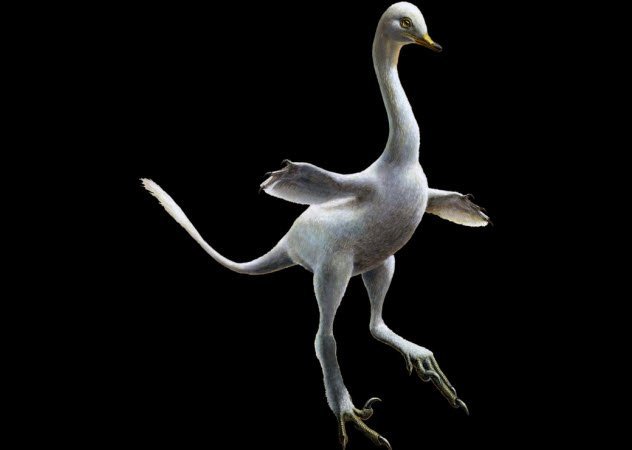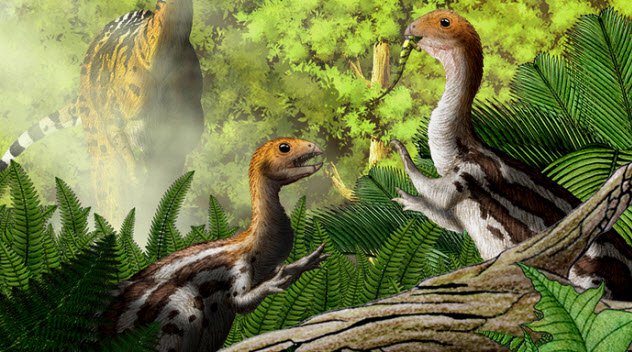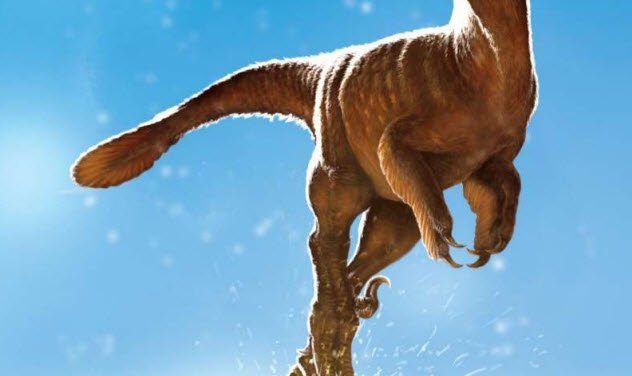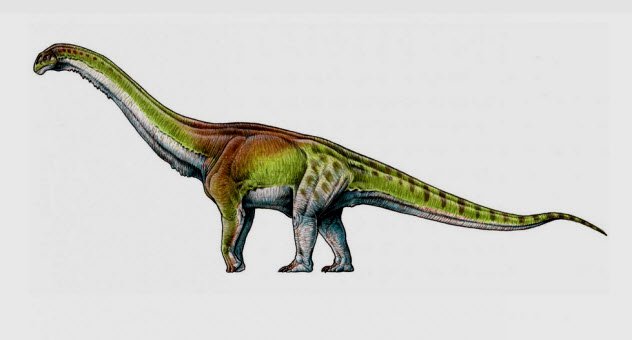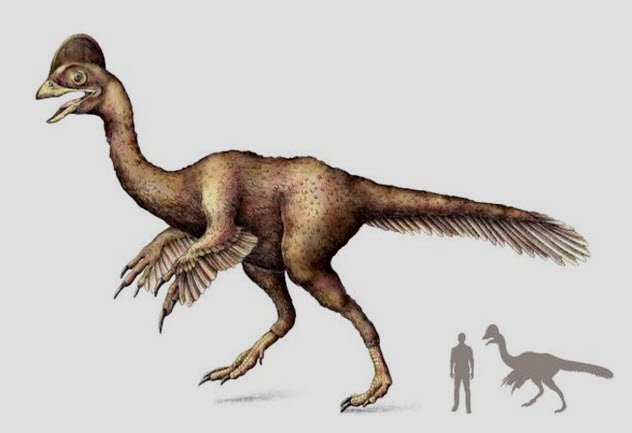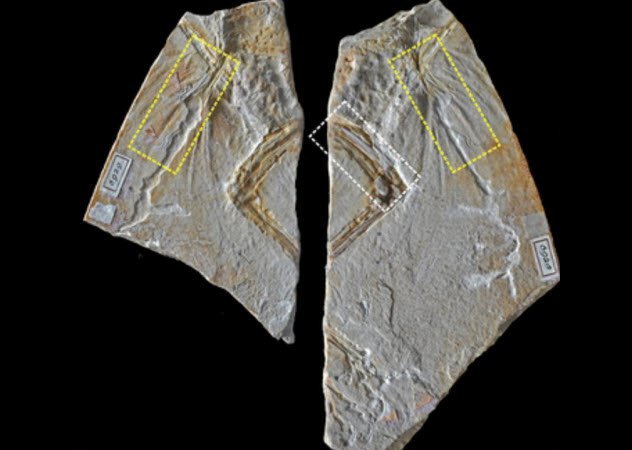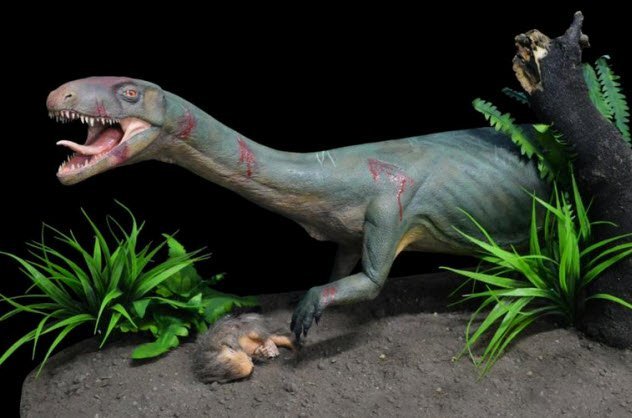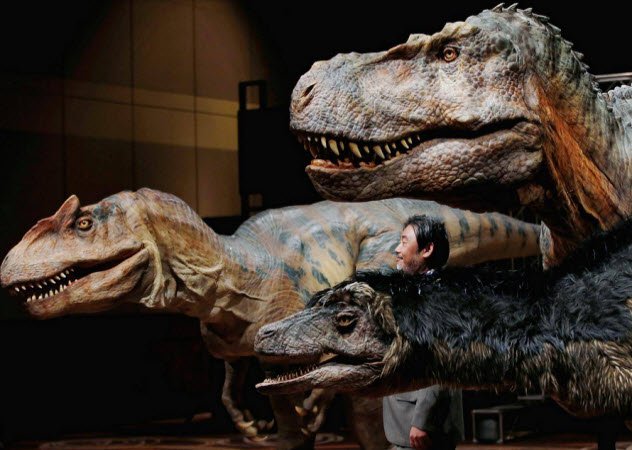10 Fascinating New Things We Learned About Dinosaurs
2017 has been a bustling year for scientistss and dinosaur enthusiasts around the world. They discovered some new species, refuted some old ones, and even restored an overlooked animal groups from the dead. They adapted new 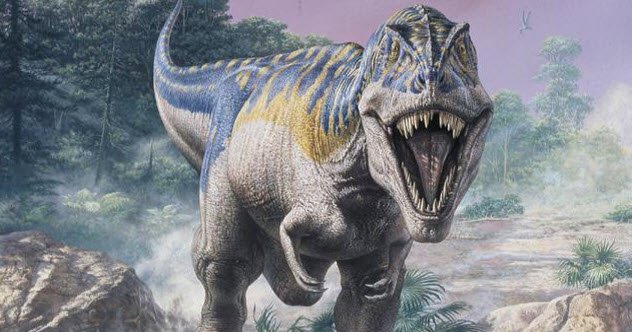 things about dinosaur conduct and fixed a couple of gaps in our comprehension of the advancement of these creatures.
things about dinosaur conduct and fixed a couple of gaps in our comprehension of the advancement of these creatures.
The year wasn't free from contention, be that as it may. A portion of the new thoughts set forward are still in their outset stages and a long way from getting all inclusive acknowledgment. This is particularly the situation when some of them endeavor to change parts of history that were viewed as built up.
10 T. Rex Was A Gentle Lover
Photograph credit: BBC
Another examination plans to change the general population view of the fearsome Tyrannosaurus rex. Researchers from Carthage College in Wisconsin and Louisiana State University paint another picture of T. rex as a touchy darling who occupied with delicate face rubbing as a major aspect of precopulatory play.
Their decision depends on the disclosure made in Montana of another kind of tyrannosaur called Daspletosaurus horneri ("Horner's repulsive reptile"). This creature, which originated before the T. rex by 74 million years, gave imperative insights to the life structures of this dinosaur sort.
A few very much safeguarded skulls recommended that Daspletosaurus horneri, and every single other tyrannosaur, had a veil of defensive layer like scales around the nose and jaws which was entered by various little nerve openings called foramina.[1] These nerve openings made the dinosaurs' noses as touchy to touch as human fingertips.
Tyrannosaurs would have utilized their material gag to investigate their environment. In the meantime, researchers behind the investigation trust that the dinosaurs would have additionally rubbed their noses together as a feature of their mating custom. Their tactile web was gotten from the trigeminal nerve which today assumes a critical part for sensation in many vertebrates, including crocodiles and gators.
9 A New Dinosaur Was So Weird That It Was Thought To Be A Hoax
Photograph credit: The Guardian
In the late eighteenth century, European naturalists found the platypus in Australia and started sending portrayals, depictions, and even stuffed examples back to Europe. Be that as it may, the creature was bizarre to the point that many individuals expelled it as a scam. A comparable thing occurred in 2017 with another types of dinosaur which gloated the exceedingly uncommon quality of living on both land and water.
The creature was firmly identified with the Velociraptor and lived around 75 million years back. Its name was Halszkaraptor escuilliei, named after scientist Halszka Osmolska and fossil authority Francois Escuillie.
The dinosaur's physical qualities were unusual. It was about the measure of a mallard, had well sharpened sharp paws, a duck-charged nose, and a long swanlike neck. In spite of the fact that it could keep running ashore, it showed numerous qualities run of the mill of land and/or water capable animals that are discovered today in present day winged creatures and reptiles.
In spite of its appearance and way of life, Halszkaraptor escuilliei was not an inaccessible progenitor of flying creatures. Scientistss who displayed the creature are certain that it will prompt the introduction of another subfamily.
The account of the fossil is similarly inquisitive. It was uncovered in a piece of Mongolia called Ukhaa Tolgod and sold on the underground market. It spent an undetermined number of years in private accumulations until the point that it achieved Francois Escuillie.
The scrappy provenance nearby the sheer peculiarity of the creature persuaded scientistss that they had a lie staring them in the face. They utilized an atom smasher called a synchrotron to examine the stone inserted fossil and ensure that all remaining parts were from the same creature.[2]
8 A Meat-Eater Turned Vegetarian During Adulthood
Photograph credit: sciencemag.org
There are a few cases in nature of creatures that experience critical physical or way of life changes when they achieve adulthood. Nonetheless, one dinosaur experienced a radical change as it matured that is a first for any reptile, surviving or terminated. It went from meat eater to veggie lover.
Limusaurus was a little, bipedal dinosaur that lived around 160 million years back. As indicated by an investigation by the Institute of Vertebrate Paleontology and Paleoanthropology in Beijing, Limusaurus lost its teeth as it progressed in age and changed to a herbivorous eating regimen in adulthood.
The Chinese group approached 19 examples traversing six diverse age gatherings. Limusaurus was conceived with many teeth estimating approximately 1 centimeter (0.4 in) each. Yearlings as of now started losing some of their teeth. When they moved toward becoming grown-ups, they had no more teeth.[3]
Besides, the creature experienced no less than 77 other anatomical changes over its life expectancy, for example, moves in the shape and extents of its skull. The upper jawbone began to bend descending with the goal that it started to take after and work as a bill.
Researchers trust that Limusaurus experienced this change so grown-ups would abstain from rivaling adolescents for nourishment. Fossils show that develop examples additionally gulped stones to help processing like feathered creatures do with gizzard stones today.
7 Dino Hips Bring End To Common Species
Photograph credit: phys.org
One of North America's most regular types of dinosaur is no more. New proof proposes that examples already distinguished as Troodon formosus have a place with no less than two species doled out to various genera.
Initially found more than 160 years prior in Montana, Troodon formosus was thusly found from Mexico the distance to Alaska, representing most recouped examples from the Troodontidae family. Be that as it may, new research by the University of Alberta proposes this was an instance of misidentification.
The new disclosure came after graduate understudy Aaron van der Reest found an in place troodontid pelvis in Alberta's Dinosaur Provincial Park which had striking contrasts from different fossils. Resulting examinations expelled Troodon formosus as a legitimate characterization. It was supplanted by Stenonychosaurus inequalis, a revived species which was itself reassigned as Troodon three decades prior, and Latenivenatrix mcmasterae, a totally new species.[4]
The disclosure has huge outcomes for the paleontological group. Up until this point, the two recently ordered species were construct just with respect to a few examples recuperated from Alberta's dinosaur stop. Given that fossils discovered all finished North America were beforehand recognized as Troodon formosus, this opens the entryway for various new species to be found.
6 A New Species Is Hailed As 'Greatest Dinosaur'
Photograph credit: The Independent
The title of "greatest dinosaur" is very pined for and fervently as size stays one of the primary intriguing parts of dinosaurs to the overall population. Since exact estimations are troublesome, if certainly feasible, given the shortage of such fossils, another contender appears to seem like clockwork. It occurred in 2015 with Dreadnoughtus, and it's happened again in 2017.
The new challenger is called Patagotitan mayorum and, as the name proposes, was found in the Patagonian district of Argentina. Like most monstrous dinosaurs, it was a piece of a gathering of since quite a while ago necked sauropods called titanosaurs.
The fossils were found in 2012 and have a place with six unique people. They were dated to roughly 100 million years prior. Patagotitan was assessed to weigh 69 metric tons and measure 37 meters (122 ft) long and 6 meters (20 ft) high.[5]
While this positively puts it among the greatest dinosaurs ever, it is as yet a bone of dispute if Patagotitan was the biggest of all. Significantly, as pointed out by scientist Kristi Curry Rodgers, Patagotitan's bones hint at incomplete development which could imply that there are considerably greater examples out there.
5 Some Dinosaurs Incubated Their Eggs Like Birds
Photograph credit: National Geographic
Indeed, even with every one of the assets we commit to contemplating dinosaurs, their generation systems stay, all things considered, a riddle. Notwithstanding, another investigation originating from a Franco-Chinese joint effort demonstrates that specific dinosaurs hatched their eggs by laying on them like present day fowls.
The creatures being referred to are called oviraptorosaurs, a gathering of feathered maniraptoran dinosaurs which incorporates the supposed "chicken from damnation." Their name means "egg cheat reptiles" since a portion of the principal fossils were discovered extended crosswise over homes and researchers expected they were executed attempting to take other creatures' eggs.
In any case, from that point forward, a few scientistss have conjectured that the oviraptorosaurs were, truth be told, hatching their own eggs. This new research bolsters that statement.
The Franco-Chinese group built up another technique for deciding the temperature utilized by these dinosaurs for brooding. They achieved this by breaking down 70-million-year-old fossilized eggs that still contained incipient organisms and deciding their oxygen isotope piece.
Amid the advancement of the skeleton, oxygen was exchanged from the egg liquid to the developing life and the isotopic wealth indicated scientists that the eggs were brooded at a temperature extending between 35– 40 degrees Celsius (95– 104 °F).[6] This is in accordance with present day fowls.
More than the outcomes, the recently created procedure could turn out to be the genuine logical pick up as it can be utilized to learn the hatching strategies for different dinosaurs. Clearly, monster dinosaurs couldn't have sat on their eggs without squashing them, however they could have utilized outside warmth sources.
4 Dinosaur Extinction Was Very Improbable
Photograph credit: The Independent
By a long shot, the most notorious annihilation occasion in the historical backdrop of our planet was the one toward the finish of the Cretaceous Period 66 million years prior. It wiped out the dinosaurs and also seventy five percent of all other plant and creature species on Earth.
In spite of the fact that there are interchange speculations, most researchers concur that this mass eradication was caused by a goliath space rock or comet that c